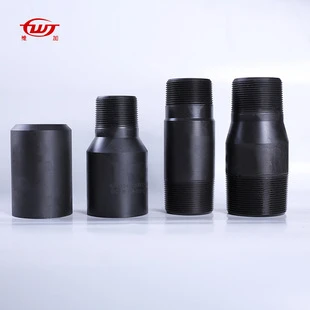- Afrikaans
- Albanian
- Amharic
- Arabic
- Armenian
- Azerbaijani
- Basque
- Belarusian
- Bengali
- Bosnian
- Bulgarian
- Catalan
- Cebuano
- Corsican
- Croatian
- Czech
- Danish
- Dutch
- English
- Esperanto
- Estonian
- Finnish
- French
- Frisian
- Galician
- Georgian
- German
- Greek
- Gujarati
- Haitian Creole
- hausa
- hawaiian
- Hebrew
- Hindi
- Miao
- Hungarian
- Icelandic
- igbo
- Indonesian
- irish
- Italian
- Japanese
- Javanese
- Kannada
- kazakh
- Khmer
- Rwandese
- Korean
- Kurdish
- Kyrgyz
- Lao
- Latin
- Latvian
- Lithuanian
- Luxembourgish
- Macedonian
- Malgashi
- Malay
- Malayalam
- Maltese
- Maori
- Marathi
- Mongolian
- Myanmar
- Nepali
- Norwegian
- Norwegian
- Occitan
- Pashto
- Persian
- Polish
- Portuguese
- Punjabi
- Romanian
- Russian
- Samoan
- Scottish Gaelic
- Serbian
- Sesotho
- Shona
- Sindhi
- Sinhala
- Slovak
- Slovenian
- Somali
- Spanish
- Sundanese
- Swahili
- Swedish
- Tagalog
- Tajik
- Tamil
- Tatar
- Telugu
- Thai
- Turkish
- Turkmen
- Ukrainian
- Urdu
- Uighur
- Uzbek
- Vietnamese
- Welsh
- Bantu
- Yiddish
- Yoruba
- Zulu
Differences Between Casing and Tubing in Oil and Gas Well Operations
Understanding the Differences Between Casing and Tubing in Oil and Gas Exploration
In the oil and gas industry, casing and tubing play critical roles in the well construction process, ensuring the safety and efficiency of hydrocarbon extraction. While they may seem similar at first glance, each serves distinct purposes and is subject to different engineering specifications. Understanding these differences is crucial for anyone involved in the drilling and production of oil and gas.
Casing The Structural Framework
Casing refers to the series of steel pipes that are installed in a drilled well to provide structural integrity and prevent the surrounding geological formations from collapsing into the wellbore. Casing is vital for maintaining the well’s integrity and protecting it from environmental hazards. It begins with surface casing, which is the first layer installed to secure the uppermost section of the well. This section protects freshwater aquifers and prevents surface contaminants from entering the well.
As drilling progresses deeper, additional casing strings are added, including intermediate casing and production casing. Each casing string serves a specific purpose, providing stability and isolation as the well reaches the targeted reservoir. The installation of casing is followed by cementing, where cement is pumped into the annular space between the casing and the well bore, effectively sealing the well and providing additional support.
Casing must withstand a variety of pressures and temperatures throughout its lifecycle. The choice of casing material—typically steel—depends on factors such as the depth of the well, the local geology, and the expected pressures and temperatures. Moreover, casing design considers factors like corrosion resistance and tensile strength to ensure durability.
Tubing The Conduit for Production
what are the differences between casing and tubing?

In contrast, tubing is the smaller-diameter pipe that runs inside the casing. Tubing is specifically designed to transport fluids—oil, gas, or water—from the reservoir to the surface. Unlike casing, which is meant to support and protect the wellbore, tubing directly influences the production efficiency and is built to withstand the internal pressures associated with produced fluids.
One of the key characteristics of tubing is its ability to be easily removed and replaced, allowing for maintenance or upgrades without the need to abandon the well. Tubing is often manufactured from high-strength steel and is sized according to the flow rates and the specific characteristics of the fluids being produced.
Additionally, tubing is equipped with various completion equipment, which may include packers, valves, and pressure gauges. These components are essential for controlling the flow of fluids and for monitoring the well's performance. The design of the tubing must also consider factors like thermal expansion and the corrosiveness of the produced fluids.
The Interplay Between Casing and Tubing
While casing and tubing serve different purposes within the well, their interplay is crucial for successful oil and gas extraction. The casing provides the structural support necessary for the well, while the tubing facilitates the flow of hydrocarbons to the surface. Their compatibility must be carefully engineered to ensure that they can function effectively together, especially under varying pressures and temperatures.
In summary, the key differences between casing and tubing lie in their respective functions casing is the robust framework that stabilizes the wellbore and protects the surrounding environment, while tubing serves as the conduit for transporting the extracted fluids. Understanding these differences is essential for optimizing well design and enhancing the efficiency of hydrocarbon production.
In conclusion, both casing and tubing are indispensable components of well construction in the oil and gas industry. Awareness of their distinct roles helps engineers and operators make informed decisions that impact the safety, efficiency, and profitability of oil and gas extraction operations. As technology advances and new materials are developed, the design and implementation of casing and tubing continue to evolve, promising improved performance in the ever-challenging environment of resource extraction.
-
Well Casing Extension Couplings – Applications and InstallationNewsJun.06,2025
-
Types of Crossover Subs in Drilling & CompletionNewsJun.06,2025
-
Key Features of High-Quality Tubing Pup JointsNewsJun.06,2025
-
Installation and Maintenance Tips for Steel Couplings for PipeNewsJun.06,2025
-
How to Select the Right Pup Joint for Oil & Gas OperationsNewsJun.06,2025
-
Applications of Stainless Steel Pipe CouplingsNewsJun.06,2025







